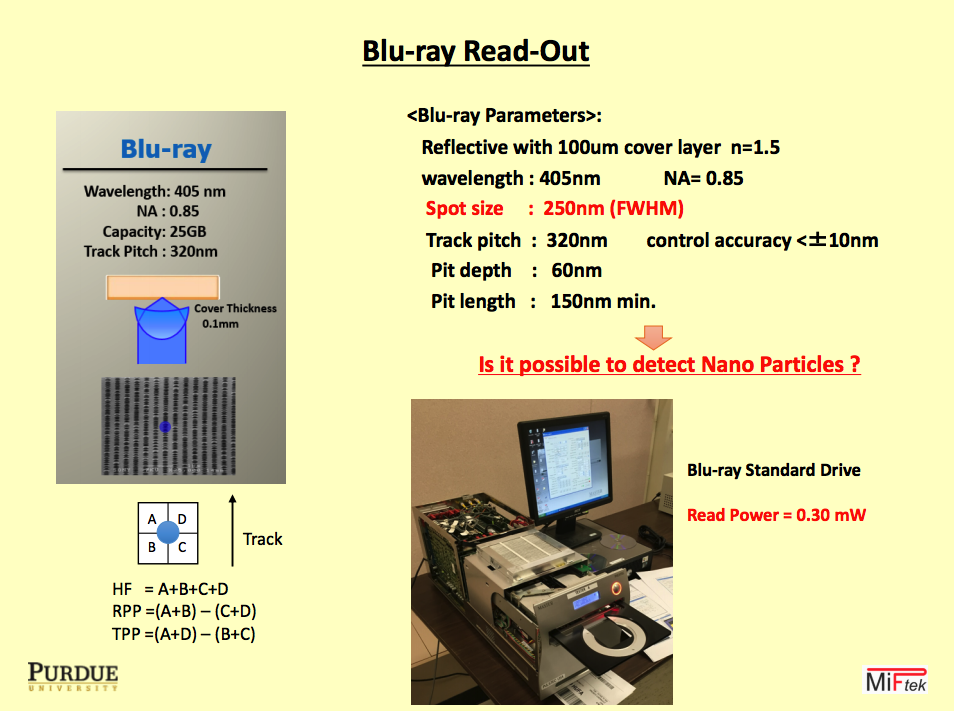Micro Imaging Cytometry by Focused Flying Laser Spot
ABSTRACT
Flow cytometry has become a critical tool for quantitative cellular analysis over the past 40 years. Current systems detect scatter and fluorescence signal by illuminating a cell with laser spot significantly larger than the cell itself. In this mode, the laser spot is so-called “Top-Hat” shape for uniform illumination which brings a wider tolerance by reducing the spatial resolution. On the other hand, Gaussian laser beam has intrinsically higher spatial resolution and peak intensity. The motivation for this work was to provide a new method for analyzing every cell features by using a smaller laser spot than the cells being analyzed.
Optical Phase Detection for Nanoparticle Analysis
Hyperspectral detection or Spectral Flow Cytometry
ABSTRACT
Hyperspectral detection in flow cytometry is a powerful tool for over ten multi-color phenotypic analysis without compensation. There are many operating flow cytometers in the marketplace with only 4 or 5 color performance. An objective of this work is to provide a universal hyperspectral detection system to analyze fluorescence signals from a variety of flow cytometers. Using our prototype we were able to evaluate a wide wavelength range (340-800nm) with 42 channels and 16 bit resolution.
The history of this technology can be found here
The first papers published in Spectral Flow Cytometry were papers from the Purdue group. These can be found on the above link.
Photon Spectroscopy by picoseconds differential Geiger-mode Si Photomultiplier
ABSTRACT
The pixel array silicon photomultiplier (SiPM) is known as an excellent photon sensor with picoseconds avalanche process with the capacity for millions amplification of photoelectrons. In addition, a higher quantum efficiency(QE), small size, low bias voltage, light durability are attractive features for biological applications. The primary disadvantage is the limited dynamic range due to the 50ns recharge process and a high dark count which is an additional hurdle.

